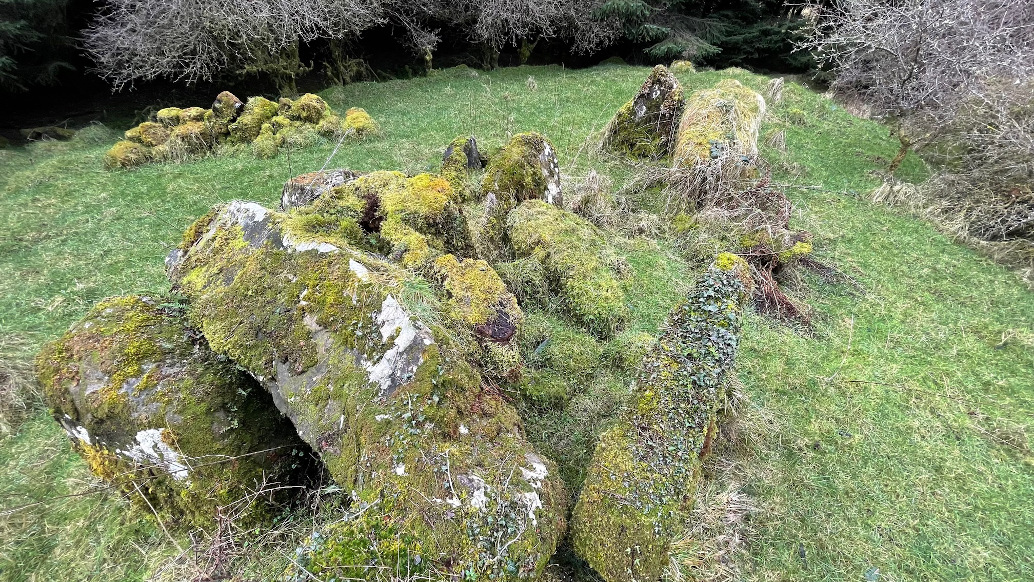
To the south/south-west... highlighting the shattered ‘rock pavement’ prevalent in the area.

To the south/south-west... highlighting the shattered ‘rock pavement’ prevalent in the area.

For such an assumed ‘peripheral site’ the defences are quite substantial. This is to the south-east.

Viewed from the north... this is a tidy, well-sited hillfort set amongst a landscape of numerous Bronze Age cairns.

Craggy, flaked inset dividing jambstone of the southern side of the tomb.

Looking north – right to left: southern entrance jamb; collapsing entrance lintel; sidestone of the first chamber.

Looking slightly north of west – the stone in the foreground is the southern entrance jamb.

The stone in the foreground is the northern sidestone of the first, eastern chamber – on its right, they left the tree stumps in place as they are stopping the entrance lintel from collapsing into the chamber.

The lintel has fallen from the entrance jambstones and is being held up by a combination of the southern sidestone of the first chamber and three tree stumps.

Looking kind of east-north-east over the gabled backstone.

Looking north – the southern sidestone of the rear chamber is missing.


Directions: Take the minor road for Anwoth off the A75 c. 0.5 miles W of the Cardoness Castle Gatehouse of Fleet junction with the A75. Stay on this narrow road for c. 0.6 mile passing by the current Anwoth Church to reach the ruins of Anwoth Old Kirk. A path heads E from the car park S of the graveyard. Follow the path across a field to the edge of the wood. Rutherford’s Well is visible c. 40 yards N of here.




Rutherford’s Well on Canmore.
Rutherford’s Well is a natural spring associated with Samuel Rutherford who was appointed Minister of Anwoth Old Kirk in 1627. It rises c. 100 yards E of Anwoth Old Kirk on the W margin of Bog Hall Wood. According to Canmore ID 63639 (go to Links) a 19th Century Well House with modern repairs and a turfed roof covers the spring. It reaches a height of c. 6 feet.
Main cairn of the (apparent) trio near Ysgubor-wen, north-west of Ystradfellte.



There is a quite fine stone circle in there somewhere, as well as two tangential stone rows.

Drumskinney stone circle is up the road.
